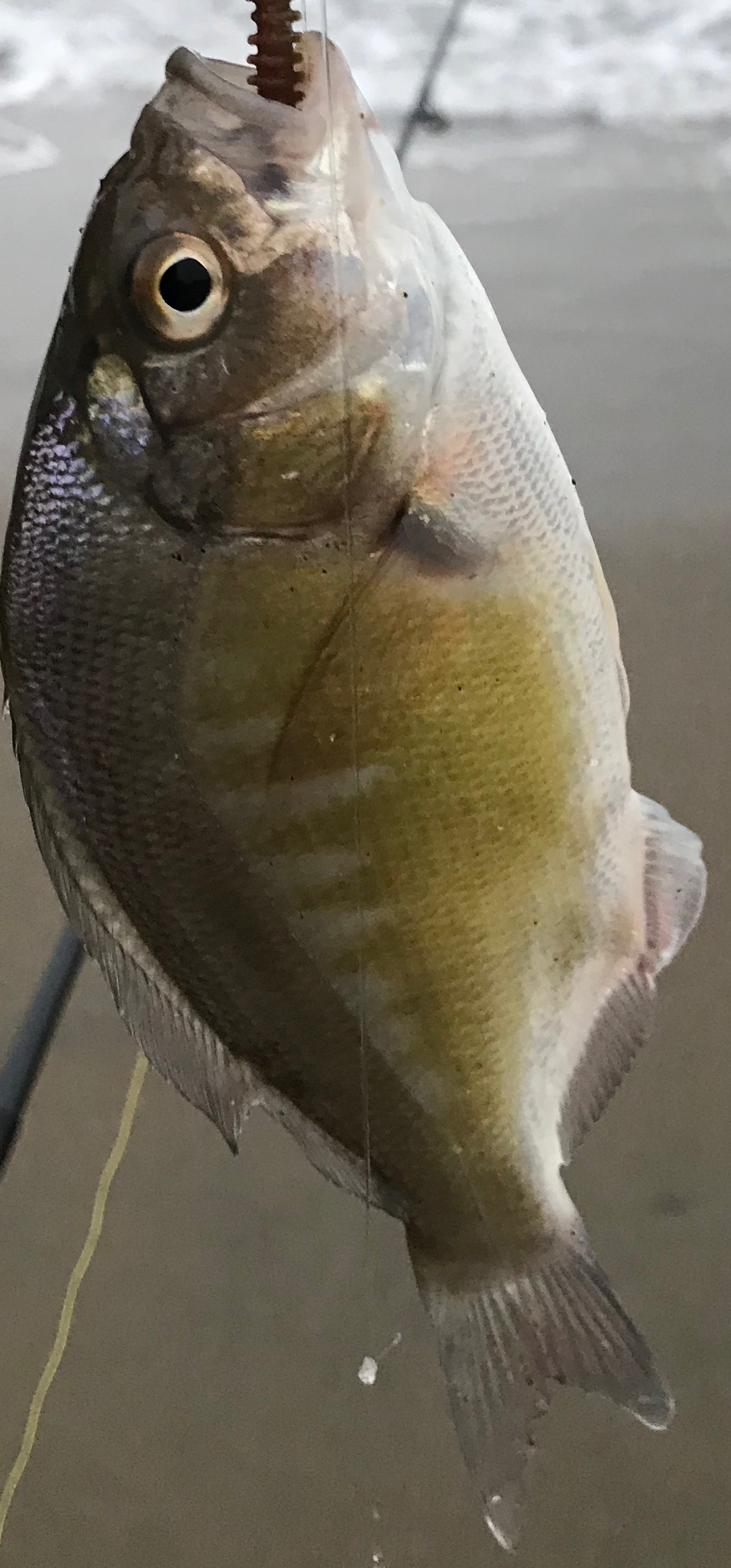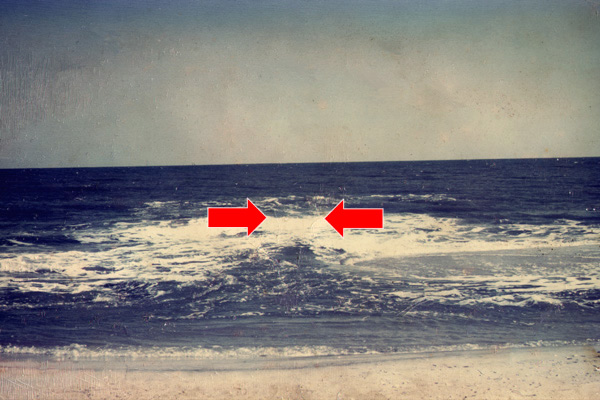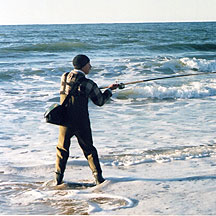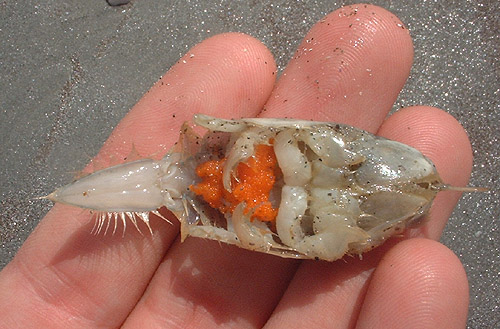|
Barred Surfperch
The barred surfperch (''Amphistichus argenteus'') is a species of surfperch native to inshore waters from northern California, United States to southern Baja California, Mexico. This species can reach a length of TL though most do not exceed TL. The maximum recorded weight is . Like other surfperches, it gives birth to live young. The diet of the barred surfperch consists predominantly of sand crabs . According to the California Department of Fish and Game, Barred Surfperch can be identified by bars and spots on sides which are often unbarred, as well as the absence of red tail. Fishery Barred surfperch are an important sport fishery for most surf fishermen in California, as they are common in the surf zone As ocean surface waves approach shore, they get taller and break, forming the foamy, bubbly surface called ''surf''. The region of breaking waves defines the surf zone, or breaker zone. After breaking in the surf zone, the waves (now reduced i .... Angle ... [...More Info...] [...Related Items...] OR: [Wikipedia] [Google] [Baidu] |
Louis Agassiz
Jean Louis Rodolphe Agassiz ( ; ) FRS (For) FRSE (May 28, 1807 – December 14, 1873) was a Swiss-born American biologist and geologist who is recognized as a scholar of Earth's natural history. Spending his early life in Switzerland, he received a PhD at Erlangen and a medical degree in Munich. After studying with Georges Cuvier and Alexander von Humboldt in Paris, Agassiz was appointed professor of natural history at the University of Neuchâtel. He emigrated to the United States in 1847 after visiting Harvard University. He went on to become professor of zoology and geology at Harvard, to head its Lawrence Scientific School, and to found its Museum of Comparative Zoology. Agassiz is known for observational data gathering and analysis. He made institutional and scientific contributions to zoology, geology, and related areas, including multivolume research books running to thousands of pages. He is particularly known for his contributions to ichthyological classification, ... [...More Info...] [...Related Items...] OR: [Wikipedia] [Google] [Baidu] |
Viviparity
Among animals, viviparity is development of the embryo inside the body of the parent. This is opposed to oviparity which is a reproductive mode in which females lay developing eggs that complete their development and hatch externally from the mother. The term 'viviparity' and its adjective form 'viviparous' derive from the Latin ''vivus'' meaning "living" and ''pario'' meaning "give birth to". Reproductive mode Five modes of reproduction have been differentiated in animals based on relations between zygote and parents. The five include two nonviviparous modes: ovuliparity, with external fertilisation, and oviparity, with internal fertilisation. In the latter, the female lays zygotes as eggs with a large vitellus, yolk; this occurs in all birds, most reptiles, and some fishes. These modes are distinguished from viviparity, which covers all the modes that result in live birth: *Histotrophic viviparity: the zygotes develop in the female's oviducts, but find their nutrients b ... [...More Info...] [...Related Items...] OR: [Wikipedia] [Google] [Baidu] |
Fish Of Mexican Pacific Coast
Fish are aquatic, craniate, gill-bearing animals that lack limbs with digits. Included in this definition are the living hagfish, lampreys, and cartilaginous and bony fish as well as various extinct related groups. Approximately 95% of living fish species are ray-finned fish, belonging to the class Actinopterygii, with around 99% of those being teleosts. The earliest organisms that can be classified as fish were soft-bodied chordates that first appeared during the Cambrian period. Although they lacked a true spine, they possessed notochords which allowed them to be more agile than their invertebrate counterparts. Fish would continue to evolve through the Paleozoic era, diversifying into a wide variety of forms. Many fish of the Paleozoic developed external armor that protected them from predators. The first fish with jaws appeared in the Silurian period, after which many (such as sharks) became formidable marine predators rather than just the prey of arthropods. Most f ... [...More Info...] [...Related Items...] OR: [Wikipedia] [Google] [Baidu] |
Amphistichus
''Amphistichus'' is a genus of surfperches native to the eastern Pacific Ocean The Pacific Ocean is the largest and deepest of Earth's five oceanic divisions. It extends from the Arctic Ocean in the north to the Southern Ocean (or, depending on definition, to Antarctica) in the south, and is bounded by the contin .... Species There are currently three recognized species in this genus: * '' Amphistichus argenteus'' Agassiz, 1854 (Barred surfperch) * '' Amphistichus koelzi'' ( C. L. Hubbs, 1933) (Calico surfperch) * '' Amphistichus rhodoterus'' ( Agassiz, 1854) (Redtail surfperch) References Embiotocidae Marine fish genera Taxa named by Louis Agassiz {{ray-finned fish-stub ... [...More Info...] [...Related Items...] OR: [Wikipedia] [Google] [Baidu] |
Surf Zone
As ocean surface waves approach shore, they get taller and break, forming the foamy, bubbly surface called ''surf''. The region of breaking waves defines the surf zone, or breaker zone. After breaking in the surf zone, the waves (now reduced in height) continue to move in, and they run up onto the sloping front of the beach, forming an uprush of water called swash. The water then runs back again as backwash. The nearshore zone where wave water comes onto the beach is the surf zone. The water in the surf zone is shallow, usually between deep; this causes the waves to be unstable. Animal life The animals that often are found living in the surf zone are crabs, clams, and snails. Surf clams and mole crabs are two species that stand out as inhabitants of the surf zone. Both of these animals are very fast burrowers. The surf clam, also known as the variable coquina, is a filter feeder that uses its gills to filter microalgae, tiny zooplankton, and small particulates out of seawater ... [...More Info...] [...Related Items...] OR: [Wikipedia] [Google] [Baidu] |
Surf Fishing
Surf fishing is land-based game fishing while standing on the shoreline or wading into the surf zone. A general term, surf fishing may or may not include casting a lure or bait, and refers to all types of shore fishing – from sandy and rocky beaches, rock jetties, or even fishing piers. The terms surfcasting or beachcasting refer more specifically to surf fishing from the beach by casting into the surf at or near the shoreline. With few exceptions, surf fishing is done in saltwater. The most common misconception about surf fishing is the idea that one must cast as far out as possible in order to reach the fish. At beaches on the west coast of the United States, and in fact, at most beaches around the world, you only really need to get your bait into knee-deep water. This is referred to as surf fishing the "skinny" (the skinny water). Equipment The basic idea of most surfcasting is to cast a bait or lure as far out into the water as is necessary to reach the target fish f ... [...More Info...] [...Related Items...] OR: [Wikipedia] [Google] [Baidu] |
Gulf Of The Farallones National Marine Sanctuary
A gulf is a large inlet from the ocean into the landmass, typically with a narrower opening than a bay, but that is not observable in all geographic areas so named. The term gulf was traditionally used for large highly-indented navigable bodies of salt water that are enclosed by the coastline. Many gulfs are major shipping areas, such as the Persian Gulf, Gulf of Mexico, Gulf of Finland, and Gulf of Aden The Gulf of Aden ( ar, خليج عدن, so, Gacanka Cadmeed 𐒅𐒖𐒐𐒕𐒌 𐒋𐒖𐒆𐒗𐒒) is a deepwater gulf of the Indian Ocean between Yemen to the north, the Arabian Sea to the east, Djibouti to the west, and the Guardafui Channe .... See also * References External links * {{Authority control Bodies of water Coastal and oceanic landforms Coastal geography Oceanographical terminology ... [...More Info...] [...Related Items...] OR: [Wikipedia] [Google] [Baidu] |
Emerita Analoga
''Emerita analoga'', the Pacific sand crab or Pacific mole crab, is a species of small, sand-burrowing decapod crustacean found living in the sand along the temperate western coasts of North and South America. It is found on exposed sandy beaches in the swash region of the intertidal zone. Description The Pacific sand crab is a small crustacean growing up to long and wide. The female is nearly twice as large as the male and can often be identified by the orange egg mass carried under the telson. The adult is sand-coloured and well camouflaged, and has no claws or spines. It has five pairs of legs and three pairs of pleopods. Sand crabs moult periodically, so their exoskeletons may be found washed up on the beach. The sand crab is well adapted to life in the sand, which presents an unstable substrate, and its shape is an elongated dome shape designed for fast burrowing. The eyes are on long stalks and the antennules are also elongated so as to project above the surface of the ... [...More Info...] [...Related Items...] OR: [Wikipedia] [Google] [Baidu] |
Fish Measurement
Fish measurement is the measuring of individual fish and various parts of their anatomies. These data are used in many areas of ichthyology, including taxonomy and fisheries biology. Overall length * Standard length (SL) is the length of a fish measured from the tip of the snout to the posterior end of the last vertebra or to the posterior end of the midlateral portion of the hypural plate. Simply put, this measurement excludes the length of the caudal (tail) fin. * Total length (TL) is the length of a fish measured from the tip of the snout to the tip of the longer lobe of the caudal fin, usually measured with the lobes compressed along the midline. It is a straight-line measure, not measured over the curve of the body. Standard length measurements are used with Teleostei (most bony fish), while total length measurements are used with Myxini (hagfish), Petromyzontiformes (lampreys), and (usually) Elasmobranchii (sharks and rays), as well as some other fishes. Total length meas ... [...More Info...] [...Related Items...] OR: [Wikipedia] [Google] [Baidu] |
Charles Frédéric Girard
Charles Frédéric Girard (8 March 1822 – 29 January 1895) was a French biologist specializing in ichthyology and herpetology. Born in Mulhouse, France, he studied at the College of Neuchâtel, Switzerland, as a student of Louis Agassiz. In 1847, he accompanied Agassiz as his assistant to Harvard University. Three years later, Spencer Fullerton Baird called him to the Smithsonian Institution to work on its growing collection of North American reptiles, amphibians and fishes. He worked at the museum for the next ten years and published numerous papers, many in collaboration with Baird. In 1854, he was naturalized as a U.S. citizen. Besides his work at the Smithsonian, he managed to earn an M.D. from Georgetown University in Washington, D.C. in 1856. In 1859 he returned to France and was awarded the Cuvier Prize by the Institute of France for his work on the North American reptiles and fishes two years later. When the American Civil War broke out, he joined the Confederate ... [...More Info...] [...Related Items...] OR: [Wikipedia] [Google] [Baidu] |
Baja California
Baja California (; 'Lower California'), officially the Free and Sovereign State of Baja California ( es, Estado Libre y Soberano de Baja California), is a state in Mexico. It is the northernmost and westernmost of the 32 federal entities of Mexico. Before becoming a state in 1952, the area was known as the North Territory of Baja California (). It has an area of (3.57% of the land mass of Mexico) and comprises the northern half of the Baja California Peninsula, north of the 28th parallel, plus oceanic Guadalupe Island. The mainland portion of the state is bordered on the west by the Pacific Ocean; on the east by Sonora, the U.S. state of Arizona, and the Gulf of California; on the north by the U.S. state of California; and on the south by Baja California Sur. The state has an estimated population of 3,769,020 as of 2020, significantly higher than the sparsely populated Baja California Sur to the south, and similar to San Diego County, California, to its north. Over 75% of ... [...More Info...] [...Related Items...] OR: [Wikipedia] [Google] [Baidu] |
California
California is a U.S. state, state in the Western United States, located along the West Coast of the United States, Pacific Coast. With nearly 39.2million residents across a total area of approximately , it is the List of states and territories of the United States by population, most populous U.S. state and the List of U.S. states and territories by area, 3rd largest by area. It is also the most populated Administrative division, subnational entity in North America and the 34th most populous in the world. The Greater Los Angeles area and the San Francisco Bay Area are the nation's second and fifth most populous Statistical area (United States), urban regions respectively, with the former having more than 18.7million residents and the latter having over 9.6million. Sacramento, California, Sacramento is the state's capital, while Los Angeles is the List of largest California cities by population, most populous city in the state and the List of United States cities by population, ... [...More Info...] [...Related Items...] OR: [Wikipedia] [Google] [Baidu] |








